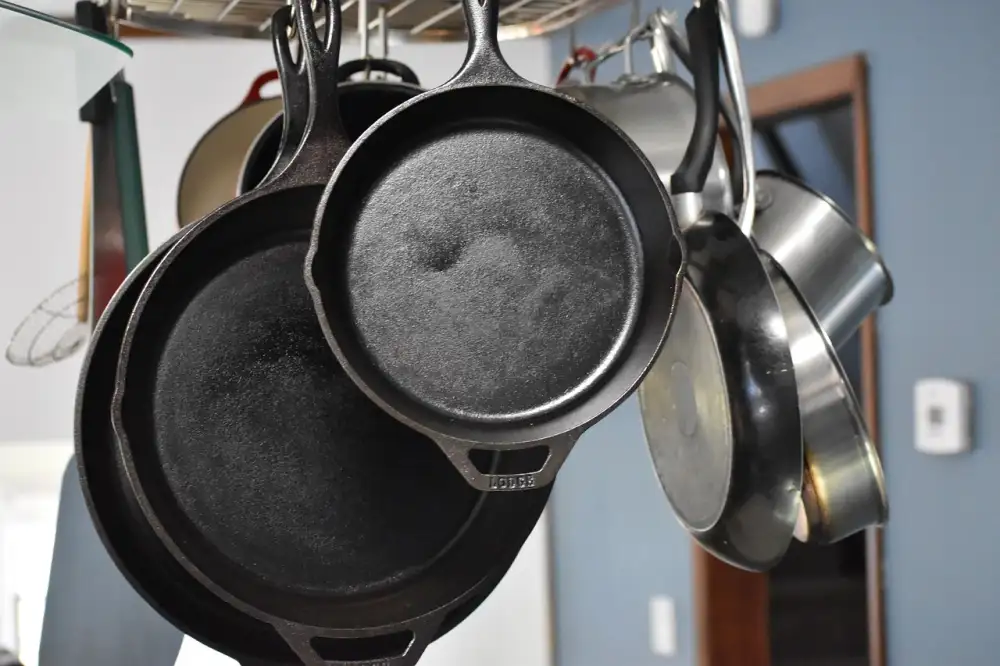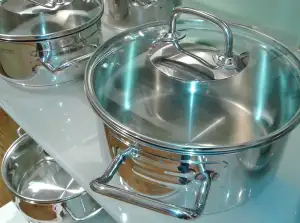Master the Art of Cleaning a Cast Iron Skillet: Your Ultimate Guide to Home Maintenance

Cleaning a cast iron skillet is an essential skill for any home cook. This versatile and durable kitchen tool requires special care to maintain its longevity and non-stick properties. Properly cleaning a cast iron skillet not only removes food residue but also prevents rusting and ensures optimal cooking performance. In this ultimate guide, we will walk you through the step-by-step process of cleaning your cast iron skillet, from gathering the necessary supplies to storing it properly. So let's dive in and master the art of cleaning a cast iron skillet!
Gather the necessary supplies for cleaning
To effectively clean a cast iron skillet, it's important to gather the necessary supplies beforehand. Here are the items you'll need:
1. Hot water: This will be the main component in cleaning your skillet.
2. Brush or sponge: Use a brush with stiff bristles or a sponge specifically designed for cast iron to remove any food particles and residue.
3. Salt: Coarse salt acts as an abrasive to help remove stubborn stains and residue.
4. Oil: Choose a high-smoke point oil like vegetable oil or flaxseed oil for seasoning and maintaining the skillet's non-stick surface.
5. Paper towels or cloth towels: These will be used for drying the skillet after cleaning.
6. Stove or oven mitts: To handle the hot skillet safely during cleaning and drying.
Having these supplies ready will make the cleaning process more efficient and ensure that your cast iron skillet stays in great condition for years to come.
Preparing the skillet for cleaning
Preparing the skillet for cleaning is an important step to ensure effective and efficient removal of dirt and residue. Start by allowing the skillet to cool down completely after use. Once cooled, gently scrape off any large food particles or debris using a spatula or a wooden spoon. Avoid using metal utensils as they can scratch the surface of the skillet. Next, rinse the skillet with warm water to remove any remaining loose particles. Do not use soap at this stage as it can strip away the seasoning of the skillet.
Cleaning the skillet with hot water and a brush
Cleaning the skillet with hot water and a brush is an essential step in maintaining its cleanliness. After each use, allow the skillet to cool slightly before cleaning. Then, using hot water and a stiff brush, gently scrub away any food particles or residue. Be sure to avoid using soap as it can strip away the skillet's seasoning. The hot water will help to loosen any stuck-on bits while the brush will help to remove them without damaging the surface of the skillet. Rinse the skillet thoroughly with hot water to ensure all debris is removed.
Removing stubborn residue with salt and oil
To remove stubborn residue from your cast iron skillet, you'll need a little extra help. Start by sprinkling a generous amount of coarse salt onto the surface of the skillet. Then, take a paper towel or a clean cloth and pour a small amount of oil onto it. Use this to scrub the salt into the stubborn spots, applying gentle pressure as needed. The salt acts as an abrasive while the oil helps to loosen and lift off any stuck-on food particles. Continue scrubbing until the residue is gone, adding more salt and oil if necessary. Once you're satisfied with the results, rinse the skillet with hot water and proceed to dry it thoroughly.
Drying the skillet thoroughly
Drying the skillet thoroughly is an essential step to prevent rusting. After rinsing off any remaining residue, use a clean towel or paper towels to dry the skillet completely. Make sure to remove all moisture from both the inside and outside of the skillet. Leaving any water droplets behind can lead to rust formation. To speed up the drying process, you can also place the skillet on a low heat burner for a few minutes until it is completely dry. Remember, a well-dried skillet is crucial for maintaining its longevity and preventing any damage.
Seasoning the skillet after cleaning
After cleaning your cast iron skillet, it is important to season it to maintain its non-stick surface and prevent rusting. To season the skillet, start by applying a thin layer of oil all over the surface, including the handle. You can use vegetable oil, canola oil, or even flaxseed oil for this purpose. Make sure to coat both the inside and outside of the skillet evenly.
Next, preheat your oven to 350°F (175°C). Place the oiled skillet upside down on the middle rack of the oven with a baking sheet or aluminum foil placed on the lower rack to catch any drips. Bake the skillet for one hour.
After an hour, turn off the oven and let the skillet cool completely inside before removing it. The heat from the oven helps bond the oil to the skillet's surface, creating a protective layer that prevents food from sticking and protects against rust.
Once cooled, wipe off any excess oil with a paper towel. Your cast iron skillet is now seasoned and ready for use! Remember that each time you cook with your skillet, you are further enhancing its seasoning.
To maintain this seasoning, avoid using soap when cleaning your cast iron skillet as it can strip away the protective layer. Instead, simply rinse it with hot water and scrub gently using a brush or sponge if necessary. Dry thoroughly before storing to prevent moisture from causing rust.
With proper seasoning and care, your cast iron skillet will become even more non-stick over time and last for generations to come. Happy cooking!
Storing the skillet properly
Storing the skillet properly is essential to maintain its quality and prevent rusting. After cleaning and drying the skillet, make sure it is completely cool before storing. Avoid stacking other cookware on top of it, as this can cause scratches or damage. To prevent moisture buildup, place a paper towel or cloth inside the skillet to absorb any excess moisture. Store it in a dry place with good ventilation, away from humidity and direct sunlight. By following these storage tips, you can ensure your cast iron skillet remains in excellent condition for years to come.
In conclusion, mastering the art of cleaning a cast iron skillet is essential for maintaining its longevity and performance in the kitchen. By following the steps outlined in this guide, you can ensure that your skillet remains clean and well-maintained.
Here are some final tips to help you maintain a clean cast iron skillet:
1. Avoid using harsh detergents or abrasive cleaners, as they can strip away the seasoning.
2. Always dry your skillet thoroughly after cleaning to prevent rusting.
3. Store your skillet in a cool, dry place to avoid moisture buildup.
4. Regularly re-season your skillet to maintain its non-stick surface.
5. Use your cast iron skillet frequently to keep it well-seasoned and prevent food from sticking.
By incorporating these tips into your cleaning routine, you'll be able to enjoy the benefits of a clean and well-maintained cast iron skillet for years to come. Happy cooking!
Published: 28. 12. 2023
Category: Home



